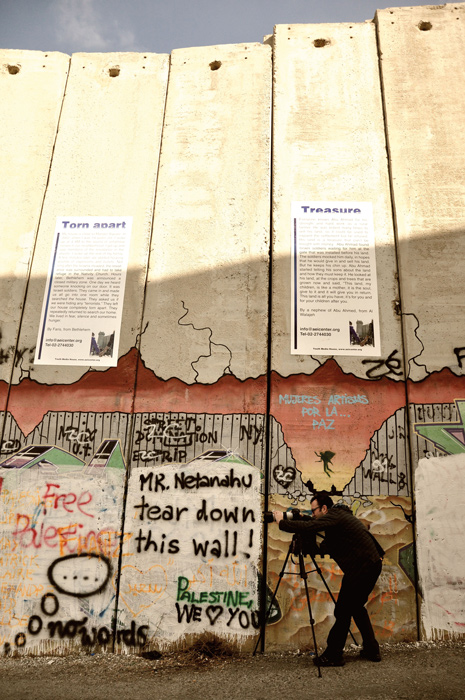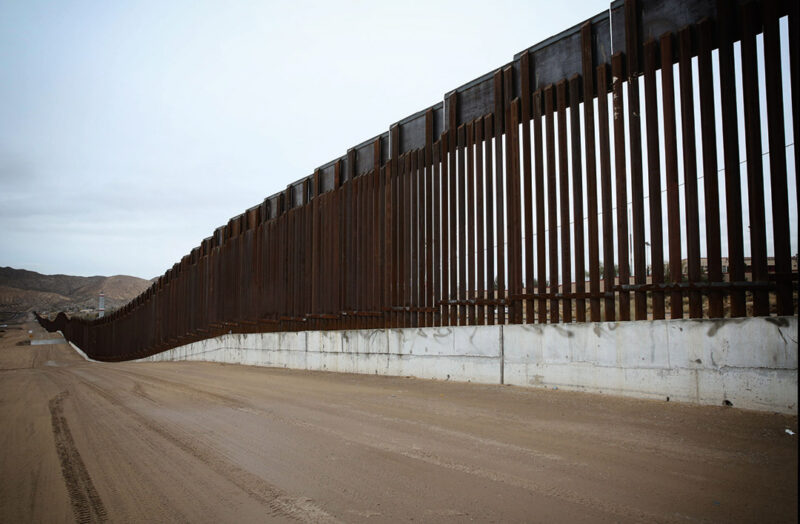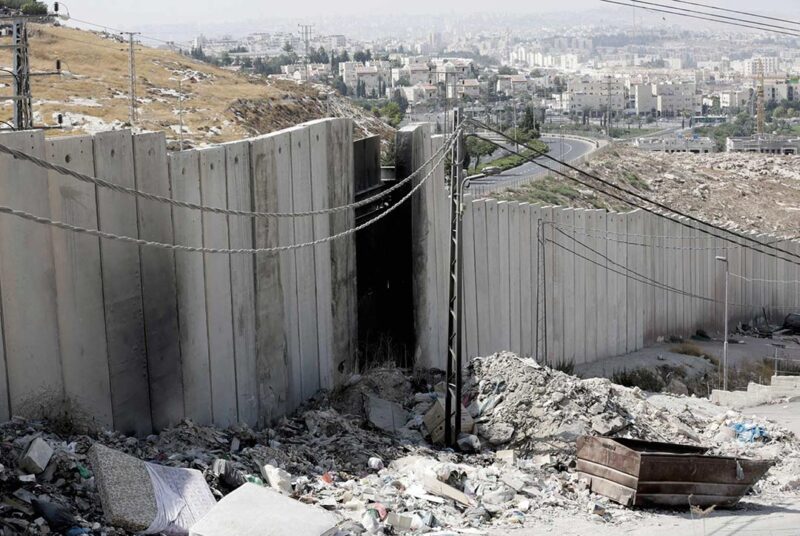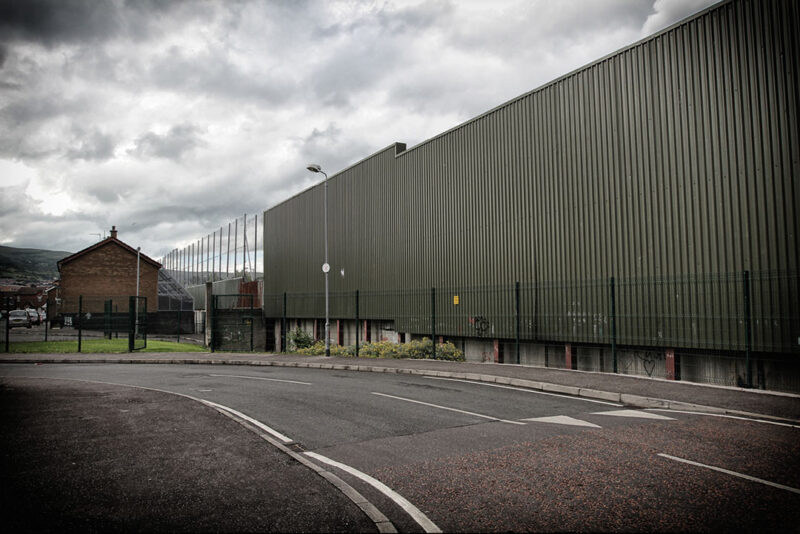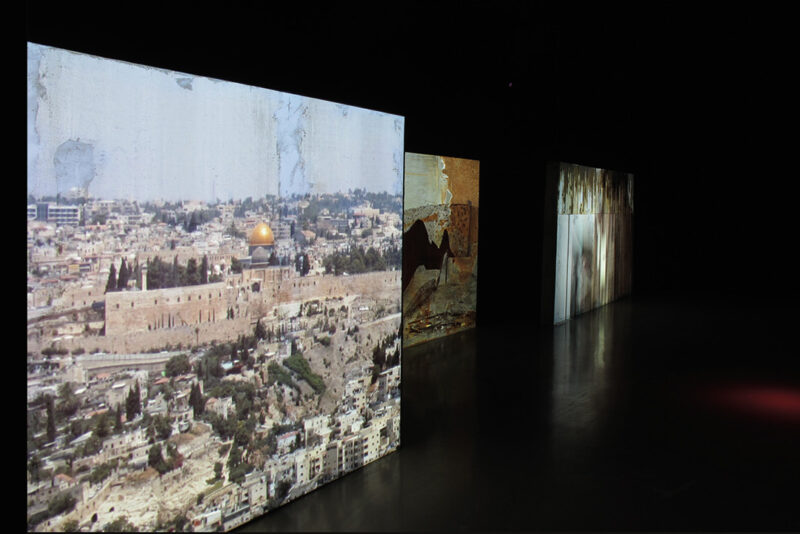[Fall 2019]
Par Sophie Bertrand
“The number of walls has tripled since the Cold War, and it has kept growing since 2001; it now consists of almost 30,000 km of armed borders.”1 This observation, made in 2013 by the researchers of the Chaire Raoul-Dandurand en études stratégiques et diplomatiques at the Université du Québec à Montréal, during a conference on issues around walled borders, conveys much more than a malaise inherited from history. Although the fall of the Berlin Wall in 1989 gave hope that barriers would crumble, today more than seventy walls separate territories. Shows of power between countries and territories are still forming the genesis of these ambitious projects. The wire-mesh or concrete ramparts have become the visible objects of political tactics aimed at installing a sense of insecurity and evoking a hypothetical neighbouring threat. If the dramatic events of 11 September 2001 in New York encouraged the establishment of this climate of general mistrust, it remains that the construction of such structures does not seem to be resolving the conflicts over which they were erected. On the other hand, there is no doubt that they maintain an ideology of fear of an “enemy” that threatens social equilibrium, a culture, or an economy.
It is in these conferences on border walls that Martin Bureau found the material for his web documentary Les Murs du désordre.2 For this multidisciplinary project begun in 2013, Bureau partnered with the researchers of the Chaire Raoul-Dandurand. To make the project’s six videos, he took his camera to shoot along three walls: Peacelines in Belfast, separating Catholic separatists from Protestants faithful to the British crown; the security wall between Israel and Occupied Palestine; and the wall on the border between the United States and Mexico.At a time when some borders are being opened in order to consolidate the global market and facilitate trade among economic powers, new separations, ever higher and longer, are being built, complicating peace processes and preventing some populations from unifying and reconciling. Intrigued by this opposition between the notion of globalization vaunted by economists and the walls rising to define territories, Bureau chose to film the “theatre” of these visible borders and the satellite movements that gravitate around them (citizen patrols, children’s games, activists’ demonstrations, and so on). In an attempt to illuminate the purpose that seems to justify these government-instigated divisions, the videos are accompanied by a discordant soundtrack that underlines the trouble caused by these walled scars that fracture natural and urban landscapes, as well as links between communities.
For each of his videos, Bureau shares his incomprehension of these structures that, though sometimes improvised, have lasted to the present day and convey history, past and current. From inter-religious conflict to migratory crises, economic inequalities, and territorial appropriations, he probes the reasons for these geopolitical tracings and mental borders often spread by fear and instrumentalized by governments. His experimental approach offers an immersive invitation to feel what life is like in the shadow of these barriers. In confronting the aesthetic of these walls with testimonials, political discourses, and a tense musical composition, the documentary’s shot sequences deal with geopolitical subjects and at the same time take account of the experience and maintain an artistic dimension. The “inventory of the audio lexical field,”3 synchronized with the filmed images, draws in the spectator.
The first video is about the wall at the United States–Mexico border. Layered over the images, a vindictive political discourse cheered on by an audience favourable to this separation evokes the image of the country as a fortress surrounded by ramparts – a shield against the Mexican and South American enemy. This political farce, called the Secure Fence Act by George W. Bush after the 2001 attacks, has been the warhorse of the Trump administration since 2016. Bureau films majestic aerial views in which natural sites such as the Rio Grande are threatened with disfigurement by new concrete division lines. These images seem to have a strange premonitory value, forming the future archives of an extinction.
Although it is not on a national border, the cement wall running through Belfast, the capital of Northern Ireland, was also of interest to Bureau. In this case, he shows the difficulties that residents are having with reunification fifty years after the civil war. The wall is the symbol of a cleavage that is still very present and difficult to heal. Although the Schengen Agreement triggered free circulation, essentially doing away with European borders, Bureau shows how the urban space is, in this context, the result of a demographic rupture.
The origins of Les Murs du désordre grew from Bureau’s questions about the Israel–Palestine border. The third part of the documentary takes place around this wall, which has separated the two Middle Eastern territories since 2002. Bureau films how this separation, a symbol of the impossibility of peace, summarizes more than a half-century of conflicts between Israel and the West Bank.
Les Murs du désordre, as presented at the Cinémathèque québécoise in winter 2019, also included an interactive installation and paintings by Bureau. Even when he turns to other media, his pictorial motif always involves the iconography of paradoxes. Although he rightly finds the expression “socially engaged artist” flawed, Bureau is concerned by the political issues that permeate societies. Translated by Käthe Roth
2013, Chaire Raoul-Dandurand en études stratégiques et diplomatiques, Université du Québec à Montréal, 25, https://dandurand.uqam.ca/wp-content/uploads/2016/04/201310-CR-Murs-web.pdf (our translation).
2 http://lesmursdudesordre.com/.
3 http://www.rcinet.ca/fr/2019/01/11/les-murs-du-desordre-une-oeuvre-pour-defier-les-limites-de-vos-frontieres/ (our translation).
Sophie Bertrand is a photographer and independent writer on photography. Since 2018, she’s engaged in a university program in museology with a view to developing curatorial photography projects. She is also a member of the Stock Photo collective (Montreal) and of Studio Hans Lucas (Paris).
[ Complete issue, in print and digital version, available here: Ciel variable 113 – TRANS-IDENTITIES ]
[ Individual article in digital version available here: Martin Bureau. Borders and Walls — Sophie Bertrand ]

